66. „Warszawska Jesień”
Resounding Things
“Resounding Things” is the theme of the 66th Warsaw Autumn Festival, which brings together sound and musical installations, soundscapes and buildings filled with shapes and sounds. Classical instruments and ensembles shall be juxtaposed with new constructions, and composers and performers will treat all of the above as resounding objects. We will be presenting less narrative music and more swathes of sound with a rich inner life—to coexist with or walk in their surroundings. The extension of the sound palette and non-narrative forms of time flow might trigger a different perception of reality, less mediated by cultural impulses and conventions, free from some typical associations. Musical and extramusical ideas and meanings should not suffer; on the contrary, they might gain in credibility when expressed through means hitherto uncatalogued by the mind. Thus, the Festival is not fully “objective,” though we encourage you to capture even narratively dramatised works as texturally complex phenomena.
Non-concerts, installation concerts, objectophones, and performances
This year’s inauguration is not a concert but a metainstallation lasting several hours and including many stations: our audience will wander through them, choosing their own path. It will likely be impossible to hear and see everything, though some modules of this metainstallation will be repeated.
The Czapski Palace is another building filled with installations and sound objects created through the cooperation between students and teachers of the Academy of Fine Arts and Fryderyk Chopin University of Music.
A new Warsaw Autumn venue is the Sokolnicki Fort in the Stefan Żeromski Park, which will host sound objects and instrumental constructs, in the macro and micro scale, authored by Hans van Koolwijk and Paweł Romańczuk. Performances by both artists and Tomasz Szczepaniak will also take place there. Authors of installations and sound objects spread across many events will also include Simon Løffler with Animalia; Marko Ciciliani with the installation Why Frets? – Tombstone; Sky Macklay with the installation Harmonitrees; Krzysztof Cybulski with AAAA (augmented acoustic actuated autonomous) for three semiautonomous instruments; the ensemble of the Faculty of Mechatronics, Warsaw University of Technology, with Michał Górczyński playing the contrabass clarinet. Many objects will become objectophones, for example in works by Wojciech Błażejczyk, Eirik Brandal, and Marta Śniady.

Hans van Koolwijk Bambuso sonoro
Protagonists
This year’s main protagonists extensively featured at the Festival shall include Bernhard Lang with two lengthy works: A Song for Rachela (commissioned jointly by the Adam Mickiewicz Institute and Warsaw Autumn for the 80th anniversary of the Warsaw Ghetto Uprising) performed by Klangforum Wien, and Radical Loops (also a joint commission of the Adam Mickiewicz Institute and Warsaw Autumn) performed by the Radical Polish Ansembl. We shall also feature Chaya Czernowin and her work Seltene Erde: alchimia communicationis (commissioned by Warsaw Autumn, Music Biennale Zagreb, the Croation Composers’ Union, and the Wien Modern festival), presented by Klangforum Wien; Fozié Majd (see below in the discussion of this year’s Warsaw Autumn Iranian programme); and Yannis Kyriakides with Selves, an installation composition written on a commission by Stichting Musai and Warsaw Autumn. The works of Fozié Majd and Yannis Kyriakides will be performed by the AUKSO orchestra directed by Marek Moś, with a bass clarinet solo part interpreted by Gareth Davies.
After the brilliant work Many, Many Cadences presented at Warsaw Autumn two years ago, Sky Macklay shall reappear in two guises: with a work commissioned by Warsaw Autumn and performed by Riot Ensemble, as well as with the above-mentioned Harmonitrees, an installation presented at our inaugural event. We have been inviting Dutch sound-art creator Hans van Koolwijk for several years so are glad to finally be able to welcome him to Warsaw. He will be based at the Sokolnicki Fort, but his action will also be seen and heard during our final concerts. We shall also hear the works of Malin Bång: splinters of ebullient rebellion for orchestra (during our opening event) and Hyperoxic for ensemble (programmed by the Kompopolex ensemble). I shall cite once more the specially featured composers: Simon Løffler and Marko Ciciliani.
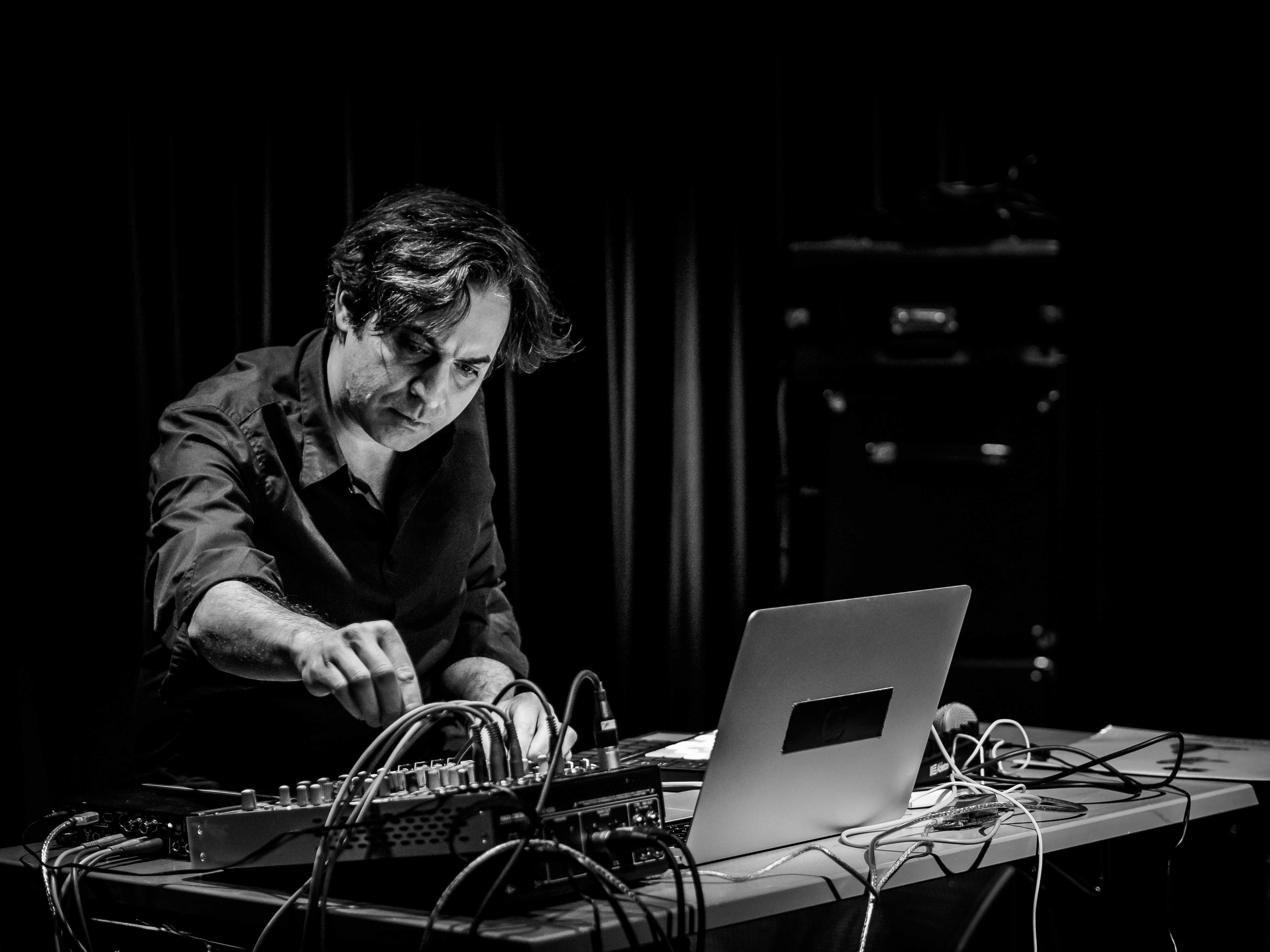
Yannis Kyriakides, photo by Peter Gannushkin
European Workshop for Contemporary Music jubilee
The Polish–German ensemble of the European Workshop for Contemporary Music will perform at Warsaw Autumn for the 20th time. Before appearing on the concert stage, young Polish performers, linked to the Fryderyk Chopin University of Music as in our three previous editions, and to various German music centres, will participate in workshops run by soloists of the Musikfabrik ensemble and headed by Rüdiger Bohn, director and teacher, who has been coaching musicians and leading concerts since the inception of the EWCM. Works selected for this year’s concert will include a new composition by Tadeusz Wielecki, one of the instigators of the EWCM, written especially for this anniversary. The Workshop is the manifestation of consistent positivistic effort, resulting not only in great concerts and the establishment of active ensembles that saw the light during these meetings—such as Kwartludium and Spółdzielnia Muzyczna—but also of building relationships between people of culture in Poland and Germany. They will be harder to fool over various political demagogies or populisms, erected on artificially ignited divisions. The EWCM ensemble is a practical embodiment of European union.
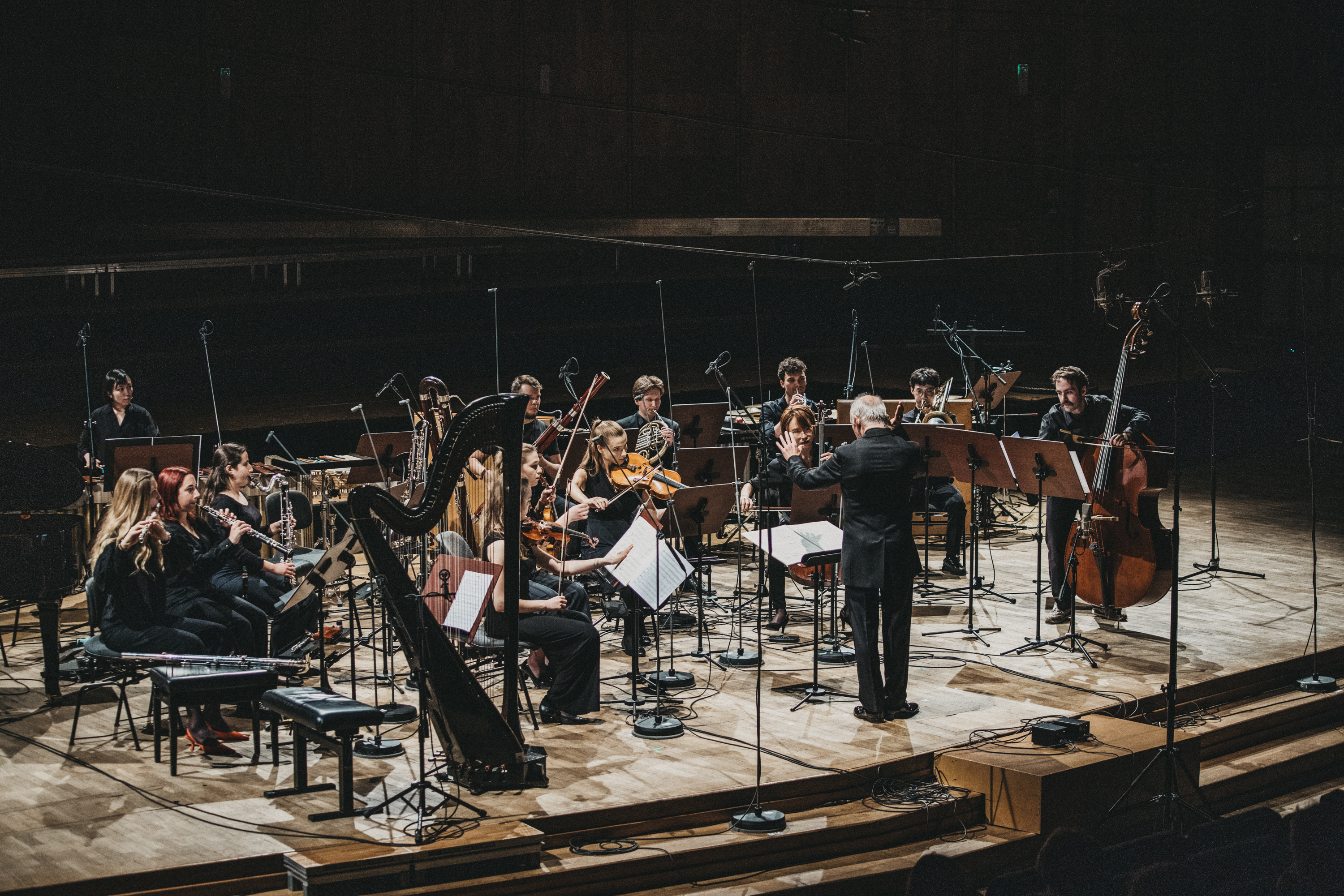
Warsaw Autumn 2022, European Workshop for Contemporary Music, photo by Grzegorz Mart - Współczesna Sztuka Dokumentacji
Iran
Interest is growing in contemporary Iranian music, its fascinating musical textures and narratives, created often by women composers who are also ethnomusicologists. This year’s Warsaw Autumn will feature the cycle Tuned to the night (Shábkūk) for string orchestra by Fozié Majd, which is returning to concert life also thanks to the extraordinary effors of our Festival. We shall also hear the music of Idin Samimi Mofakham, whole the opening event of Warsaw Autumn will feature conductress Yalda Zamani leading the Sinfonia Varsovia.
Nadar Academy
This joint initiative by the Nadar Ensemble and three European festivals: Warsaw Autumn, Gaudeamus Music Week, and Huddersfield Contemporary Music Festival, commissions works with young composers in different countries who cooperate with Nadar and are featured in concerts at the ensemble’s seat in Sint-Niklaas, Belgium and the said festivals.
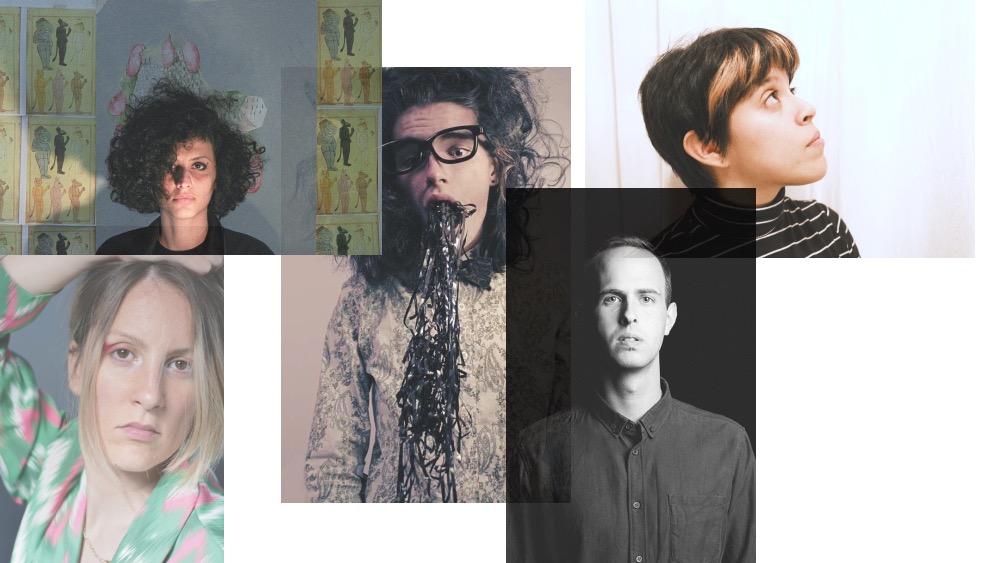
Golnaz Shariatzadeh, Adriana Minu, Craig Scott, Piotr Peszat, Christine Cornwell
Festival commissions
Warsaw Autumn has commissioned works with Bernhard Lang (jointly with the Adam Mickiewicz Institute), Paweł Malinowski, Tadeusz Wielecki, Rafał Zapała, Sławomir Wojciechowski, Yannis Kyriakides (jointly with Stichting Musai), Piotr Peszat, Chaya Czernowin (jointly with the Music Biennale Zagreb, Croatian Composers’ Union, and the Wien Modern festival)), Alex Mincek, Karol Nepelski, Sky Macklay, Martin A. Hirsti-Kvam, Wojciech Błażejczyk (jointly with the Warsaw Philharmonic), Aleksandra Słyż (Warsaw Autumn Hits the Club), and Agata Zubel (Little Warsaw Autumn). Installations designed especially for the Festival will also be shown, and unique improvisations and performances shall be presented.
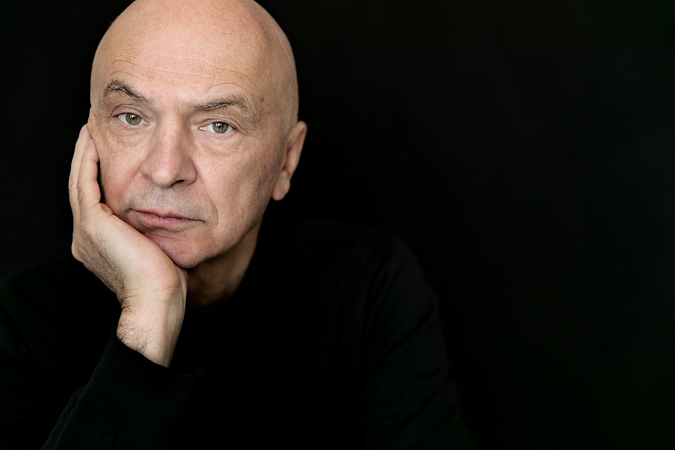
Bernhard Lang, photo by Harald Hoffmann
Little Warsaw Autumn
Little Warsaw Autumn, aimed at our youngest audiences and entire families, will include a dozen events including three world premieres under the joint title Resounding Worlds. Our youngest listeners shall travel to sound realms through “resounding things” big and small. These worlds will include behind the mirror, sound and vision animation and improvisation, and secret garden. Our guides will include artists of various disciplines: Agata Zubel, Wojciech Błażejczyk, Aleksandra Wasilkowska, Dagna Sadkowska, Sean Palmer, Justyna Sobczyk, and many others. The eponymous Resounding Worlds will assume the shape of a hologram children’s opera, musical show, and improvisation concert, as well as film animations.
Warsaw Autumn Hits the Club
Warsaw Autumn Hits the Club gets closer. Yet again, we will be hosted by the Pardon, To Tu club, where we shall introduce sound phenomena from various new music environments to each other, though they are often surprisingly similar. Two evenings will be filled with solo and ensemble improvisations, sound travels between notated, inspired, and freely improvised forms. Objectual playing? Yes, here.
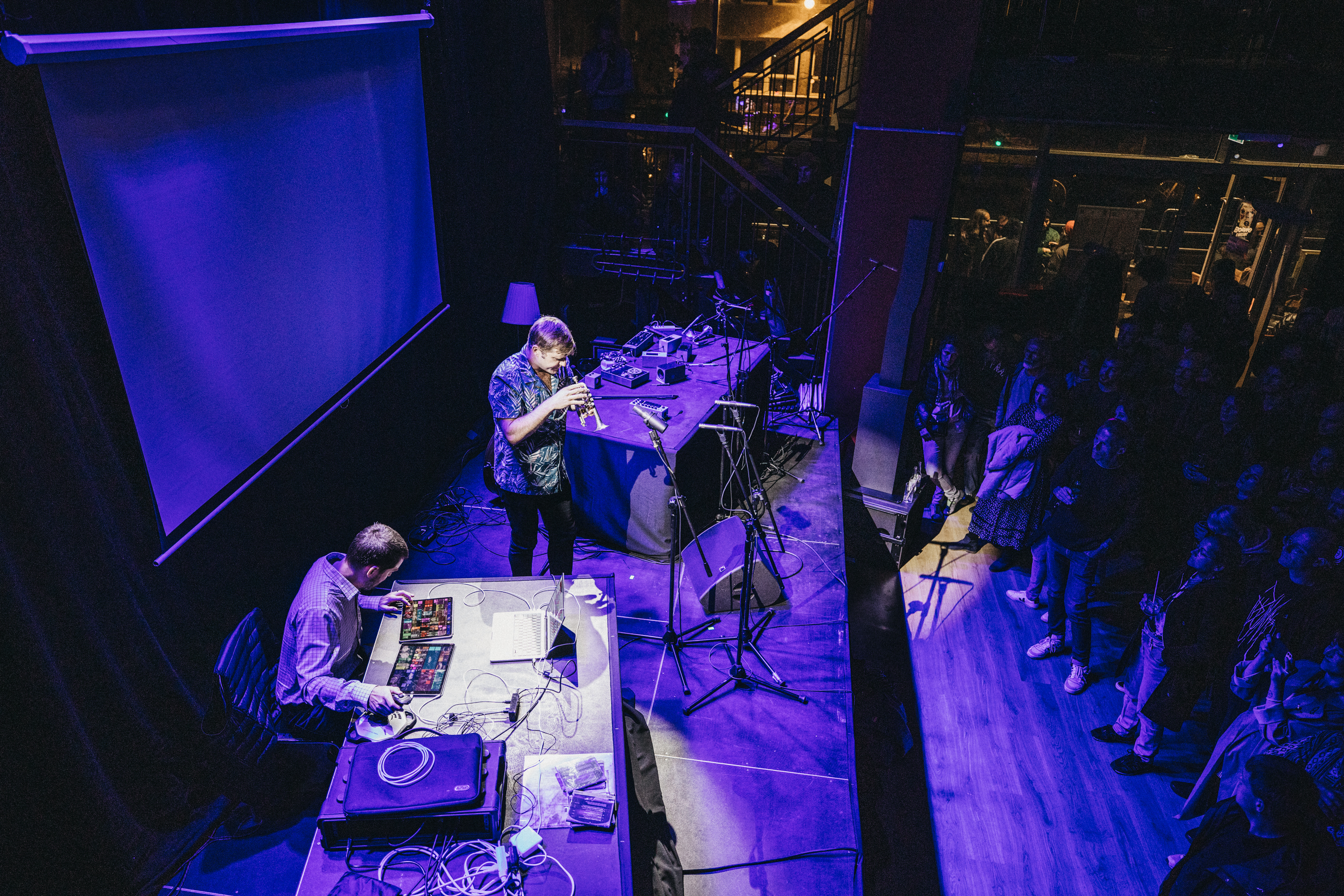
Warsaw Autumn Hits the Club 2022, Sam Pluta / Peter Evans Duo, photo by Grzegorz Mart - Współczesna Sztuka Dokumentacji
Meetings, workshops, and internet radio
The Austrian Cultural Forum shall host meetings with artists participating in the Festival and compositional workshops for young composers. Each day of Warsaw Autumn and a day after the Festival’s conclusion, the web-based Autumn Radio will present features about the programme and new music in general, hosted by Monika Pasiecznik and Tomasz Biernacki. Get to know Warsaw Autumn from the inside out!
Orchestras, ensembles, and soloists
will include: the Warsaw Philharmonic Orchestra and Choir directed by Wilson Hermanto, Sinfonia Varsovia directed by Yalda Zamani, AUKSO – City of Tychy Chamber Orchestra directed by Marek Moś, Klangforum Wien directed by Lorenz C. Aichner, EWCM directed by Rüdiger Bohn, New Music Orchestra directed by Szymon Bywalec, Nadar Ensemble, Riot Ensemble directed by Aaron Holloway-Nahum, Hashtag Ensemble directed by Lilianna Krych, Radical Polish Ansembl, Spółdzielnia Muzyczna, Nowy Theatre Youth Orchestra directed by Dagna Sadkowska and Sean Palmer, NeoQuartet, a group of performers of the Simon Løffler installation, soloists of the Katowice Philharmonic, Sarah Maria Sun, Evan Hulbert, Agata Zubel, Valentina Magaletti, Tomoko Mukaiyama, Aleksandra Słyż, Hans van Koolwijk, Kuba Krzewiński, Arkadiusz Bialic, Paweł Romańczuk, Steve Beresford, Madhira De Saran, Gareth Davis, John Edwards, Ryszard Lubieniecki, Maja Miro, Kaja Draksler, Szymon Gąsiorek aka Pimpon, Miłosz Pękala, Grzegorz Tarwid, Dominik Strycharski, and others.
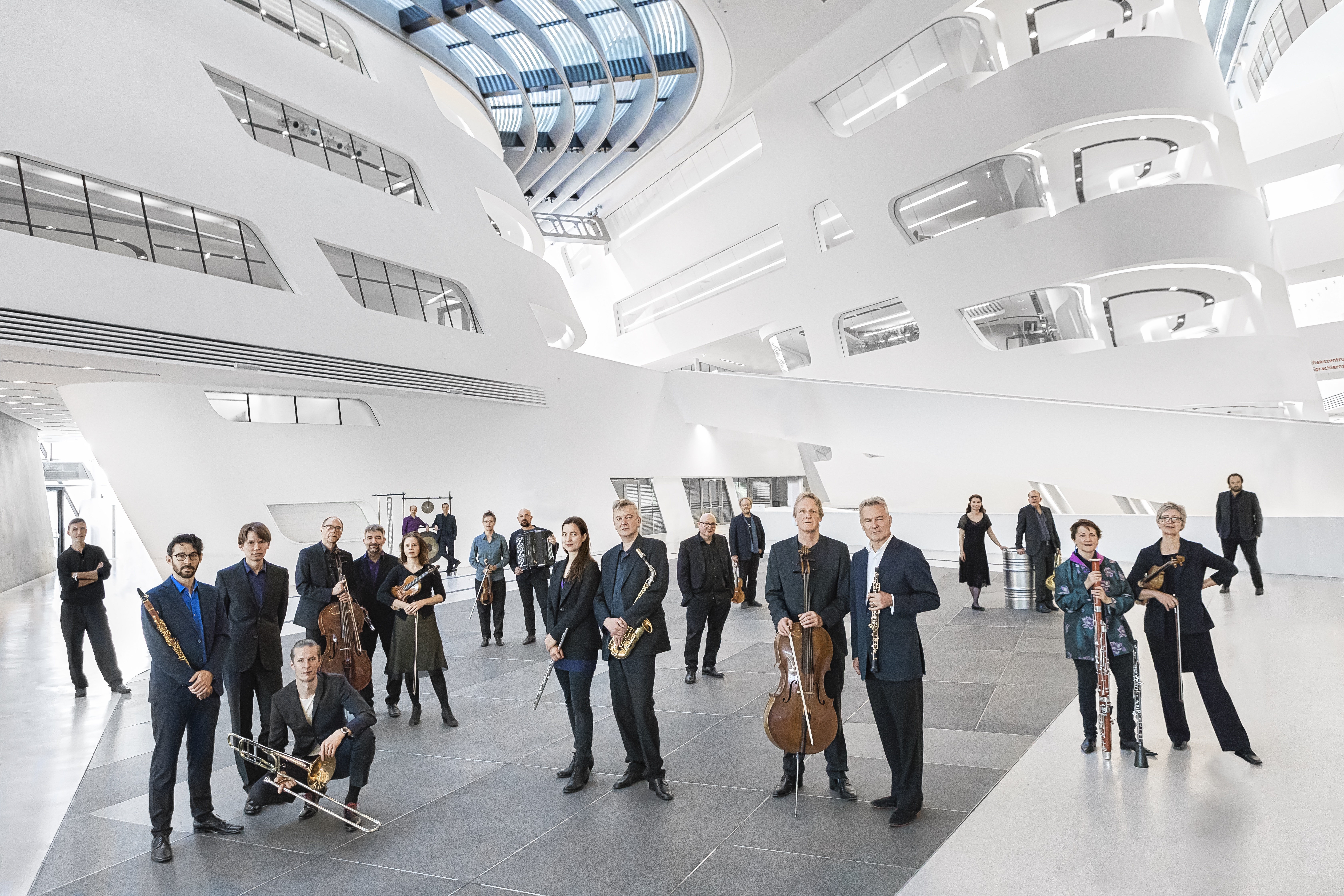
Klangforum Wien, photo by Tina Herzl
Authors of compositions, improvisation, and installations
Malin Bång, Katherine Balch, Maja Bosnić, Christine Cornwell, Chaya Czernowin, Monika Dalach, Kaja Draksler, Bára Gísladóttir, Nina Fukuoka, Clara Iannotta, Martyna Kosecka, Sky Macklay, Valentina Magaletti, Fozié Majd, Adriana Minu, Maja Miro, Naomi Pinnock, Teoniki Rożynek, Madhira De Saram, Golnaz Shariatzadeh, Aleksandra Słyż, Rebecca Saunders, Jagoda Szmytka, Marta Śniady, Agata Zubel, Steve Beresford, Wojciech Błażejczyk, Erik Brandal, Marko Ciciliani, Krzysztof Cybulski, John Edwards, Szymon Gąsiorek aka Pimpon, Henryk Mikołaj Górecki, Paweł Hendrich, Martin A. Hirsti-Kvam, Toshio Hosokawa, Neo Hülcker, Kuba Krzewiński, Yannis Kyriakides, Iannis Xenakis, Bernhard Lang, David Lang, Simon Løffler, Ryszard Lubieniecki, Hans van Koolwijk, Helmut Lachenmann, Paweł Malinowski, Fabio Machiavelli, Alex Mincek, Idin Samimi Mofakham, Karol Nepelski, Piotr Peszat, Paweł Romańczuk, Marcin Rupociński, Marcin Stańczyk, Dominik Strycharski, David Lang, Grzegorz Tarwid, Alex Vaughan, Tadeusz Wielecki, Krzysztof Wołek, Sławomir Wojciechowski, Rafał Zapała; as well as students and teachers of the Academy of Fine Arts and the Fryderyk Chopin University of Music: Alicja Staszewska, Dominika Reszka, Jakub Wróblewski, Domi Depowski, Maciej Miecznikowski, Agnieszka Suchocka, Daniela Rippel-Markiewicz, Zuzanna Wawro, Filip Roszkowski, Adam Czerski, Barbara Zach, Martyna Kacprowicz, Kajetan Dziak, Maryla Kłosowska, Szymon Nalepa, and Jan Olejniczak.
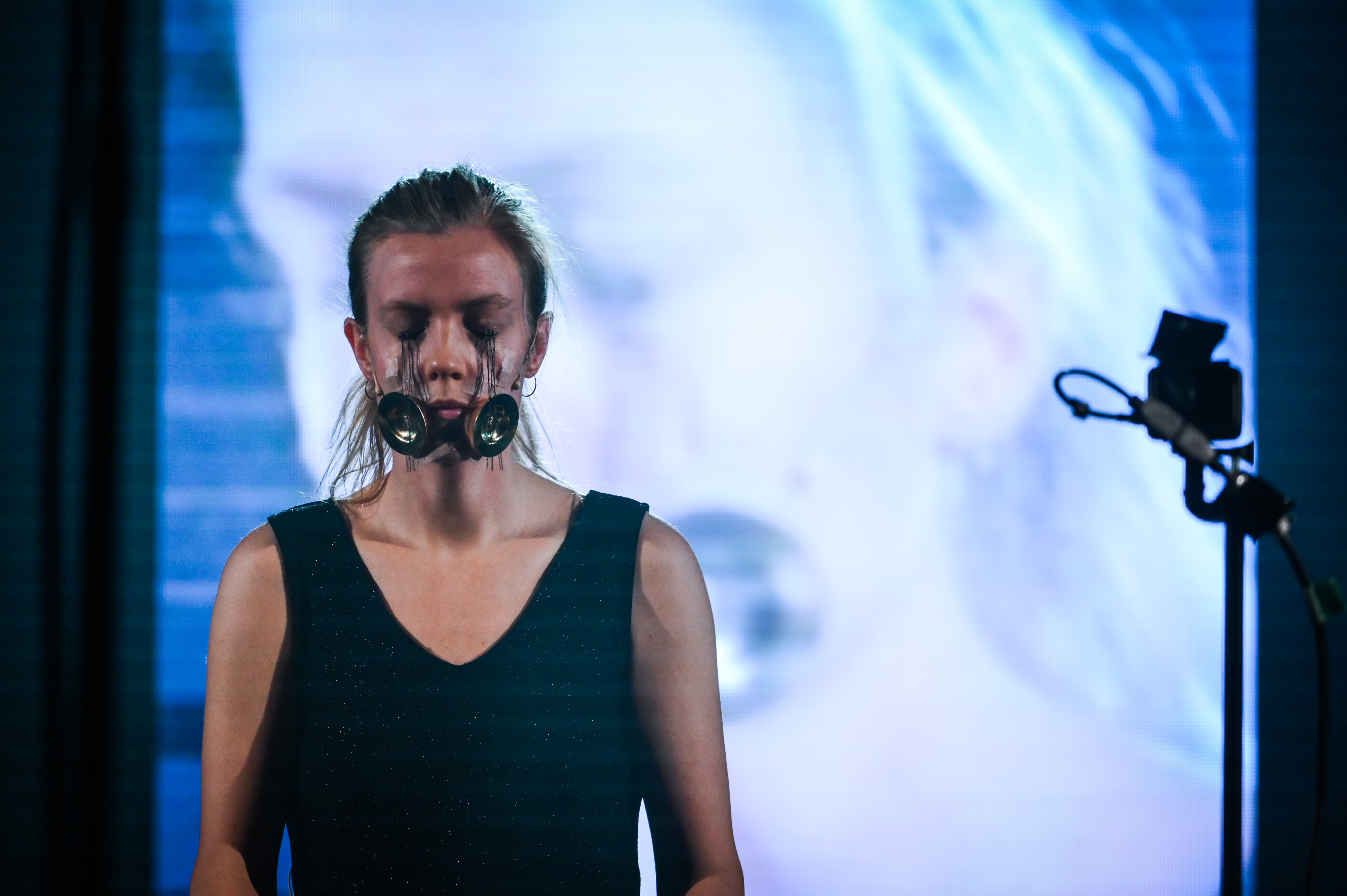
Ane Marthe Sørlien Holen performinh Animalia III by Simon Løffler, fot. Alexander Banck-Petersen
The Festival in numbers
This year’s Warsaw Autumn will feature works by 32 female and 49 male composers, including 42 linked to Poland. Twelve venues in Warsaw shall host 47 events from our main programme, Warsaw Autumn Hits the Club, and Little Warsaw Autumn. 22 works will be presented for the first time. We shall hear five orchestras, one choir, eleven ensembles, and 23 soloists. Sixteen fringe events will also take place.
Festival liaisons with Ad Libitum and PWM Edition
The guest festival at this year’s Warsaw Autumn is Ad Libitum. On 19 September, a concert titled Ad Libitum at Warsaw Autumn will take place, followed on 20 September by a meeting with its performers and creators of the festival. On 22 September, a special concert of the PWM Edition will also take place, featuring the New Music Orchestra.
Warsaw Autumn strives to emphasise the importance of cooperation between festivals and institutions, mutual inspirations and continuations, as well as solidarity for the difficulties faced by the entire new music community. We wish to thank the following entities for the joint initiatives and inspirations: Ad Libitum, PWM Edition, AvantArt, Musica Polonica Nova, Sacrum Profanum, WRO, Music Biennale Zagreb, Wien Modern, Festival of Premieres, Gaudeamus Music Week, Huddersfield Festival of Contemporary Music, Podium Gegenwart Deutscher Musikrat, Adam Mickiewicz Institute, Warsaw Philharmonic, Sinfonia Varsovia, Katowice Philharmonic, Stichting Musai, and the festivals of the Ulysses network. We also send our thanks to the institutions and individuals who have engaged in Warsaw Autumn’s fringe events, through which our Festival can reach a wider audience. All together, we create a nationally and internationally important cultural movement.
Programme teams
Apart from our repertoire committee, Paweł Hendrich—who combined the membership in the repertoire committee with curating our opening event—and the curators of Warsaw Autumn Hits the Club and Little Warsaw Autumn, the programme of this year’s various festival events is the fruit of the work of Ania Karpowicz, Kuba Krzewiński, Antoni Michnik, Michał Mendyk, Janusz Jabłoński, Tomasz Gregorczyk, Wojciech Błażejczyk, Przemysław Danowski, Adam Dudek, Prot Jarnuszkiewicz, Łukasz Kosela, and Jakub Wróblewski.
Debates
Warsaw Autumn is a cultural debate space also thanks to its fora of intellectual exchange. During this year’s edition, we shall feature the founding meeting of a platform for contemporary music ensembles and organisations, instigated by Ania Karpowicz and the Hashtag Ensemble. The surge in new initiatives and their growing influence on new music is largely happening in the non-governmental sector. The latter’s artistic power was already shown last year at the Chamber Marathon. The NGO’s cultural productivity is accompanied by instability and a precarious financial condition, not least because of inflation. For this area of culture, it is essential to benefit from the constitutional “auxiliary role of the state” and aiming for a balance between three sectors of culture: the state, local governments, and NGOs.
We shall also feature a symposium of European festivals syndicated in the Sounds Now organisation, titled Curatorial Voices of the Other, coordinated by Monika Żyła. Another space for cultural debate shall be offered by the panel Composers, Festivals, and Critics: A common or divided space, coordinated by Ania Karpowicz and Kuba Krzewiński. All three are Warsaw Autumn fringe events and shall take place in the HashterLab Contemporary Music Space.
Partners and allies
We thank our sponsors, coorganisers of the Festival, partners and allies, including the Capital City of Warsaw, Ministry of Culture and National Heritage, Warsaw Philharmonic, Polish Radio Programme 2, Society of Authors ZAiKS, Fryderyk Chopin University of Music in Warsaw, Academy of Fine Arts, Adam Mickiewicz Institute, PWM Edition, and Żoliborz House of Culture.
Time to begin the 66th International Festival of Contemporary Music. Let me wish you a time of intense experiences, unfaltering interest in musical works, ideas, and people. May the “resounding things” resonate within us during the nine days of the Festival.
Jerzy Kornowicz
Director of the Festival
The programme is subject to alteration
About Warsaw Autumn
Warsaw Autumn (Warszawska Jesień) is a festival with a long tradition and a true witness to music history. It is the only contemporary music festival in Poland on an international scale and with an international status. For many years, it was the only event of this kind in Central and Eastern Europe. Nonetheless, it remains a living organism: it thrives as much as Polish cultural funding and the general condition of music allow. The Festival is organised by the Polish Composers’ Union. The Repertoire Committee, an independent body appointed by the Union’s Board, determines the program of each edition of the festival. Warsaw Autumn is, therefore, an international and nonprofit festival of a nongovernmental association.
Warsaw Autumn was created in 1956, during the thaw that followed years of Stalinist dictatorship. Even though the government quickly abandoned the democratisation course, the Festival continued without interruption (with two exceptions) during the entire Communist era: its finances were secured by the state (up to this day, it is primarily finances from public funds). In the 1990s, Poland’s new economic and social situation threatened the financial stability of Warsaw Autumn. With a new model and procedures of culture financing developed since, the subsequent editions of the Festival may now be planned in a much more predictable way.
Paradoxically, the communist era was a golden age for Warsaw Autumn. The Festival was an obvious crack on the Iron Curtain, an island of creative freedom in a sea of compulsory Socialist realism. Here, the most varied forms of artistic invention were possible. That created a sense of general freedom of expression, and the Fesrtival was seen as a form of political protest. Audience attendance reached 120 per cent; Warsaw Autumn made the headlines, and there were several hundred international guests, both from the East (for Soviet citizens, it was the only opportunity to experience new currents in music) and the West. The government tolerated this situation, presenting itself as a liberal patron of the arts. Another important goal for the authorities when allowing the Festival was to demonstrate the superiority of socialist music over the bourgeois art of capitalist countries. Of course, there was censorship, and a permanent threat of the authorisation being annulled, especially under pressure from the Soviet government, who considered avant-garde music and the entire atmosphere of Warsaw Autumn as ideological diversion. In order to pursue our artistic endeavours, it was often necessary to use a ruse.
“This edition of the Festival,” Krzysztof Baculewski wrote about the 16th Warsaw Autumn in 1972 in a timeline published for the Festival’s 50th edition, “again verges on the political. The Ministry of Culture and the Arts orders for the work of Edison Denisov to be deleted from the programme, as the composer is not well seen in the Soviet Union. As we know, such orders could not be discussed, so ‘in exchange,’ we got the Piano Concerto of the Soviet Composers’ Union secretary general for life and member of the Supreme Soviet, Tikhon Khrennikov, with the composer as soloist. This concert is partly boycotted by the Warsaw public; the younger audience, especially youngsters and students, do attend to have a laugh. As a sign of protest, the Warsaw Autumn Repertoire Committee withdraws its members’ names from the programme book. And Denisov’s work would be played soon anyway—but this time, he appears under the maiden name of his wife, Gala Varvarin…”
Regardless of the independent image that continued to attract audiences, music in the 1960s and 1970s abounded in new and exciting events, rousing the interest of the general public. After years of isolation from the new musical currents and phenomena in Western Europe following World War II and Stalinist isolationist politics, Poles were now decided to make up for lost time, learning the works of Schoenberg, Berg, Webern, Varèse, and even Bartók or Stravinsky through the festival. Warsaw Autumn was also an opportunity to follow the latest avant-garde experiments of those years: Boulez, Nono, Dallapiccola, Maderna, and Cage. Composers, performers, critics, and musicologists from the West were eager to come to Warsaw, too: out of curiosity about the countries on the other side of the curtain and simply because Warsaw Autumn gained worldwide recognition as one of the most important places for new music.
Warsaw Autumn’s modernist image was established almost from the very beginning: conservative music remained marginal in the programmes. The Festival retains an open formula, and aims at presenting a variety of phenomena and tendencies typical for the latest music: from Webern-inspired radicalism derived (Lachenmann, Ferneyhough, Hollinger), through currents that refer to the music of historical or traditional cultures, up to audio-art and sound installations. Warsaw Autumn is often termed—appropriately—as pluralistic and positively eclectic. This is necessary in order to familiarise Polish audiences with the latest developments in the world of music. For Polish musicologists and journalists, Warsaw Autumn’s programme books are the primary source about modern music. The Sound Chronicle, a full set of recordings that is published after each festival, performs a similar function (until 1999, these chronicles included Polish music only; since the Aimard plays Ligeti record in 2000, the series was extended to international music).
Today, one of the main goal of Warsaw Autumn’s creators—to familiarise the Polish audience with the classic works of the twentieth century (i that were seen as such already at the dawn of the Festival)—has of course been fulfilled. Yet there remain gaps regarding the classics of the second half of the twentieth century. For example, Stockhausen’s Gruppen was performed for the first time in Poland only at the 2000 Warsaw Autumn festival, and Boulez’s Répons as late as 2005. The festival’s two other objectives, however, are timeless: to present new music from Poland and abroad.
From all the above, an important aspect of Warsaw Autumn emerges: the new and newest trends are presented in the context of modern classics. The Festival’s identity is that of an event that shows modernity in its relation to tradition. Moreover, the Festival is a debate, a forum for different tendencies and opinions. Finally, the phenomenon of Warsaw Autumn is that it performs its mission continuously, year after year. It is not a one-off event, a news campaign, or a themed concert. The essence of Warsaw Autumn is that it has stayed—for nearly sixty years—the same. And yet it is continuously renewed, following the evolution of art, cultural situation, and overall reality.
Contemporary music in Poland has long functioned on somewhat odd terms; it has been considered hermetic, abstract, and specialist. Hence the challenge undertaken by the organisers, in the new socioeconomic reality of Poland, to overcome that stereotype. Indeed, Warsaw Autumn’s audience continues to grow, sometimes overflowing the concert venues. Importantly, the average age is low. The public is increasingly interested in more refined, complex music. In the last decade or so, a young musical elite has emerged that is not afraid of “difficult” music, and wants to stand out from the mass consumers of pop culture. These people are looking for something new and different; for the exotic in the broad sense of the word. But they also look for music that enriches the listener. In today’s world, dominated by the internet, contemporary music has moved away from the ridiculous or the indifferent of yesterday. A large number of new festivals, initiatives, and projects are created around new music. The question today is no more whether contemporary music makes sense but what it really is—whether modern music can only make sense in the historical context of the Western tradition of serious art music.
All obstacles and difficulties notwithstanding, Warsaw Autumn remains a creative event with first-class achievements and an international reputation. It is Warsaw’s cultural flagship. Warsaw Autumn has cooperated with leading Polish cultural institutions including the National Philharmonic, Grand Theatre–Polish National Opera, Polish Radio, Polish Television, Adam Mickiewicz Institute, National Audiovisual Institute, and National Institute of Music and Dance, as well as, significantly, the embassies, cultural institutes and foundations of the many countries whose music is represented at the festival. When Warsaw Autumn has a national or regional theme, the cooperation is very close, such as in 1998 with a Scandinavian programme supported by the Nordic Council of Ministers, Pierre Boulez’s 80th anniversary with French cultural institutions on the 80th anniversary of the composer’s birth, the Polish–German Year in 2005, and the North Rhine–Westphalia Cultural Season in Poland in 2011.
The atmosphere of the Festival has certainly changed in recent years, compared to the early 1990s and earlier. Our concerts have expanded to different venues across Warsaw in search of new audiences: apart from traditional venues such as the Warsaw Philharmonic, Music Academy, theatres, and churches, Warsaw Autumn now also take place in less “classic” places: sports halls, old factories, modern buildings, and clubs. New colour is being added to the Festival by young people, who prevail in the audience. They are not professional musicians or artists: they just participate in culture. As to the music itself, it increasingly often features an electroacoustic layer. Concerts require complex systems of sound distribution. Composers treat space as an important factor of form. They introduce video projections and new technologies. A good example is the audiovisual orchestra concert presented during the 48th Warsaw Autumn Festival. The incredible scenery of the Highest Voltage Hall’s “futuristic” facilities, wonderfully illuminated by Polish Television, became an additional element of the show.
But don’t be misled by the spectacular character of these big projects. This is the way contemporary composers think and write. This is a feature of the present. Keeping up with this trend, Warsaw Autumn consistently maintains its credibility as a place where independent and disinterested art, free from commercial aspects, is cultivated. Every guest at Warsaw Autumn concerts can be confident to be hearing the best and latest from the world of new music.
Tadeusz Wielecki
Festival Director from 1999 until 2016